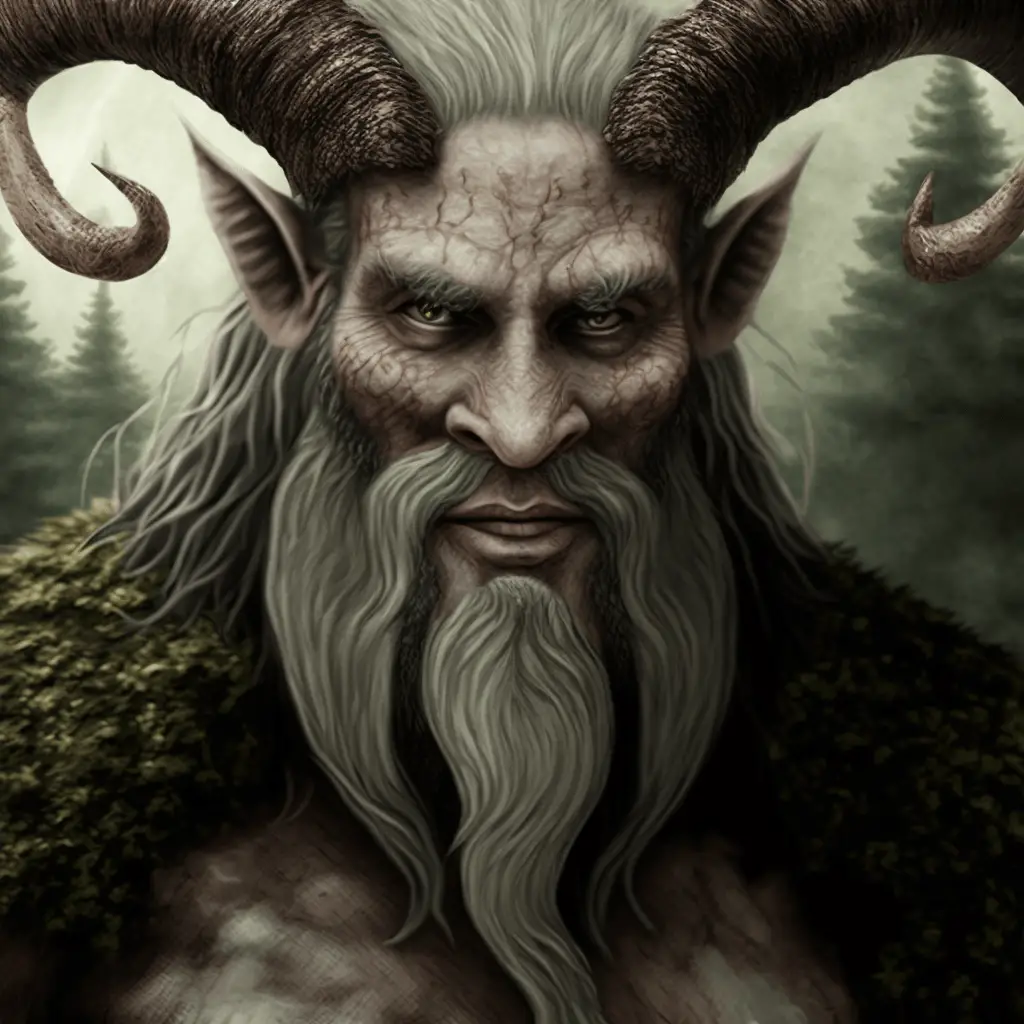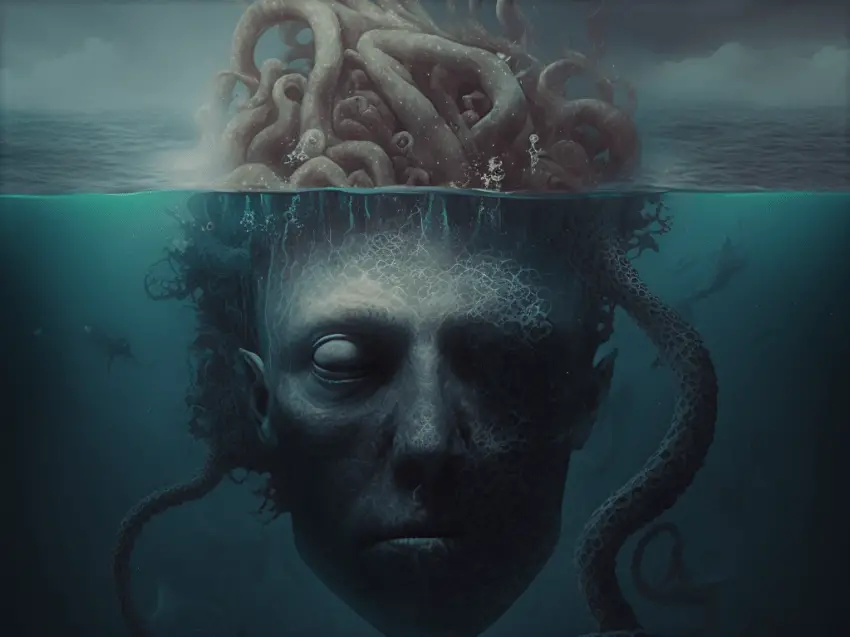Share the Lore!
By: Sid Meyers
What Are The Fomorians?
The Fomorians are not fae, whose name refers to demons from below the sea. Instead, these supernatural giants, possibly fallen gods, were farmers and seafarers when not terrorizing others.
The Fomorians have many name variations: Fomóirie, Fomóri, Fomhóire, Muiridi, and Fomors.
The Fomorians have been called many things: monstrous, giants, giant-kin, spirits, sea raiders, sea robbers, and demigods.
Their nature is hostile, evil, villainous, malevolent, and tyrannical.
These ugly, 20 feet tall, supernatural beings were considered one of the first settlers of Ireland and the enemy of Tuatha Dé Danann.
Where Did The Fomorians Originate?
The Fomorians’ origins depend on the tale. Many stories speak of them emerging from below. The “deep” is usually from the depths of the fathomless sea or a netherworld in the earth.
As the Vikings began raiding Ireland, stories shifted, with whispers that the Fomorians were descendants of Noah’s cursed son, Ham. Thus, like the actual historic sea raiders, the Fomorians arrived at the shores of the green island on ships.

What Did The Fomorians Look Like?
The Fomorians are tall beings that stretch 12 feet to 30 feet high, depending on the tale. However, their most commonly described height is 20 feet.
These giants are considered ugly. Some tales claim they once had beauty, but their looks were destroyed as they turned evil.
Their hulking human-like bodies are often described as deformed: covered in tumors, crooked, hunchbacked, with disproportioned limbs where one might be longer than the other or missing. A few tales describe them as all having only one eye, one arm, and one leg. In addition, their nearly hairless skin ranged from anemic-white to gangrene-purple.
While the Fomorian body is always portrayed as a giant human, the head might not be, sometimes resembling a goat. Facial features might include lacking an eye, having the eyes positioned on the side of the head, large ears, bulbous nose, and gaping mouths with misshaped teeth.
However, there are tales where a few Fomorians were beautiful. Elatha, the Fomorian king, is described similarly to the Viking stereotype, with luscious golden hair. Bres, his son, and king of the Tuatha Dé Danann was also known for his beauty.
Did The Fomorians Have Magical Powers?
The Fomorians had some magical powers, most notably the fog. Their strength was destruction and chaos, able to bring on storms, darkness, drought, winter ice, plague, and blight.
The relationship to the elements could give Fomorians advantages that generally come with enhanced senses. For example, rather than supernatural hearing, there are tales where some Formations could have the wind bring them conversations from anywhere in the land.

Did The Fomorians Have Any Practical Skills?
For all their brute strength and size, the Fomorians were not considered deft warriors. They simply caused chaos and destruction without finesse or gift for battle. Even the sea raiding tales make them out to be nothing but pirates.
However, like the Vikings, there are stories where they are gifted in agriculture. However, there are other stories where it is the Partholon that are the excellent farmers, and the Fomorians are hunter-gathers.
In the myths where Fomorians have a gift for working with the land, they are responsible for introducing plowing and could sense when it was the right time to plant and harvest.
Who Are The Notable Fomorians?
The stories of the Fomorians are numerous and varied. Thus, the details of their numbers, appearance, and even where they came from shift with the tales. However, there are some notable Fomorians who are mainstays in the myths.
Balor: The One-Eyed King
Balor is known for his one deadly eye is filled with poison and can kill with a look. This lethal weapon was not an inherent trait but the result of a childhood accident with a magical brew made by Druids.
He is sometimes called the greatest king of the Fomorians, although this translation is disputed. He is also known as their great leader, chief, or champion.
Balor eventually dies in battle at the hands of his grandson, the sun god Lugh (Lugus, Luga). Balor’s death and Lugh’s triumph share many similarities with the story of David & Goliath.

Elatha: King Of The Fomorians
Elatha is the “prince of darkness,” a king with a head of golden hair.
The son of Delbaeth, he is also known as Elotha, Elada, Ealadha, and Elier.
He is known for wooing Eriu, a Tuatha Dé Danann woman. He made his way to her on a silver vessel and was clothed in gold. The result of their affair was Bres, who would go on to become a loathed king of the Tuatha Dé Danann.
Eithne: Mother Of Lugh
Eithne is Balor’s daughter and mother to Lugh. She is also known as Ethlinn, Ethliu, and Ethniu.
In a tale reminiscent of Oedipus, Balor is told through a Druid’s prophecy that he will die at the hands of his grandson. Thus, Balor locks up his daughter in a tower on an island with twelve women to guard and attend to her needs.
In the meantime, Balor steals a magical cow, upsetting the owner, Cian.
In a bid to get his magical cow back, Cian enlists the help of a Druid who takes him to Eithne’s island, where the two meet and make baby Lugh.
Cethlenn: Warrior Mother And Balor’s Wife
Cethlenn is the mother to Elthne and, in some stories, Balor’s wife (in others, they are not married).
Cethlenn is also known as Caitlín, Ceithlinn, Cthleann, Ceithlenn, and Ceithlionn.
In addition, she carried the nickname “Crooked Teeth,” which has also been translated as “Crooked Toothed,” “Twisted Teeth,” and “Buck-Toothed.”
Cethlenn has the power of prophecy in some stories and foretells Balor’s death at the hands of his grandson.
Cethlenn fights in the same battle where Balor meets his end. In it, she mortally wounds the deity and Druid Dagda. However, in some tales, it takes over a century for him to succumb to the mortal wound.
Where Did The Fomorians Go After Defeat?
The Fomorians are eventually defeated by the Tuatha Dé Danann. They are locked up in a tower in some tales and others speak of them being driven back into the sea.
There are stories where one ship full of Fomorians escapes and live on as pirates.
Resources:
- Fomorie, Celtic Mythology
- Fomorian: Merriam-Webster
- Fomoire: Timeless Myths
- Fomorians Facts for Kids
- The Ages of the World
